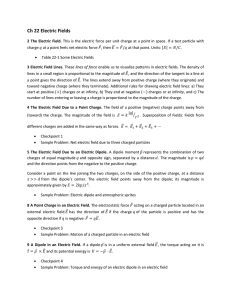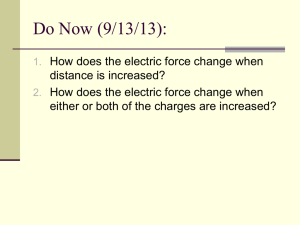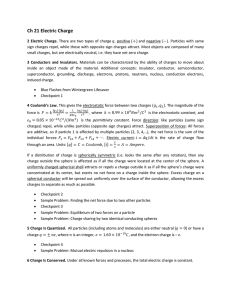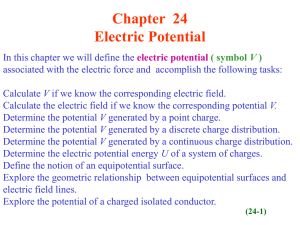Ch 24 Electric Potential
advertisement
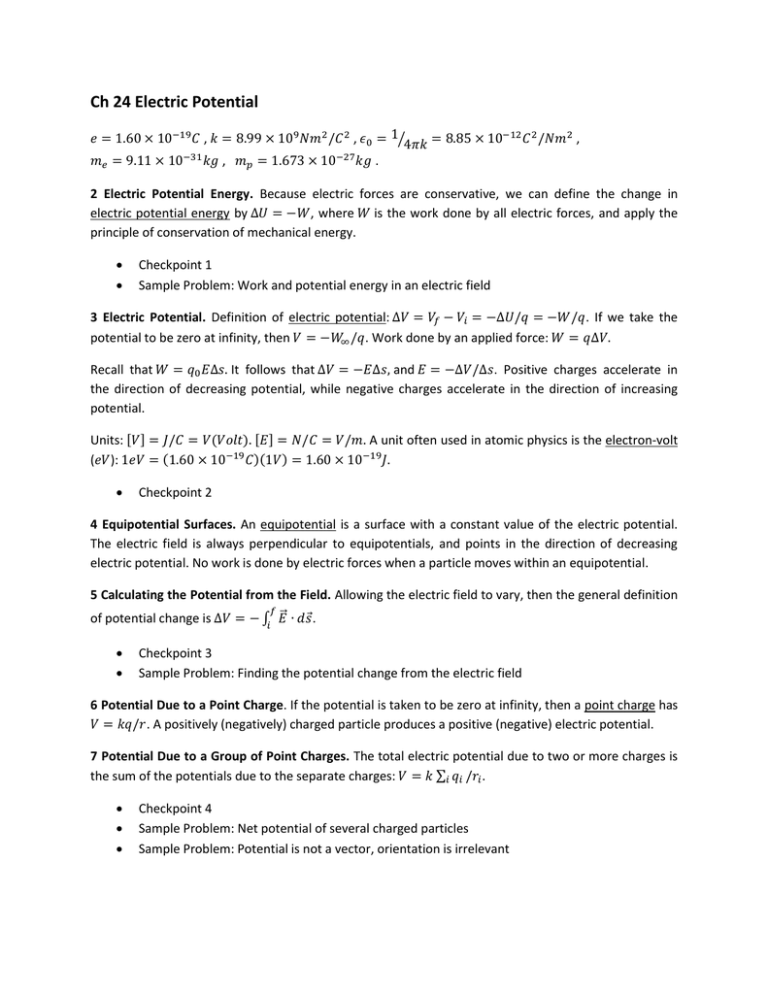
Ch 24 Electric Potential , ⁄ , , , . 2 Electric Potential Energy. Because electric forces are conservative, we can define the change in electric potential energy by , where is the work done by all electric forces, and apply the principle of conservation of mechanical energy. Checkpoint 1 Sample Problem: Work and potential energy in an electric field 3 Electric Potential. Definition of electric potential: potential to be zero at infinity, then . Work done by an applied force: . If we take the Recall that It follows that and . Positive charges accelerate in the direction of decreasing potential, while negative charges accelerate in the direction of increasing potential. Units: [ ] ( ): [ ] A unit often used in atomic physics is the electron-volt Checkpoint 2 4 Equipotential Surfaces. An equipotential is a surface with a constant value of the electric potential. The electric field is always perpendicular to equipotentials, and points in the direction of decreasing electric potential. No work is done by electric forces when a particle moves within an equipotential. 5 Calculating the Potential from the Field. Allowing the electric field to vary, then the general definition of potential change is ∫ ⃗ . Checkpoint 3 Sample Problem: Finding the potential change from the electric field 6 Potential Due to a Point Charge. If the potential is taken to be zero at infinity, then a point charge has . A positively (negatively) charged particle produces a positive (negative) electric potential. 7 Potential Due to a Group of Point Charges. The total electric potential due to two or more charges is ∑ the sum of the potentials due to the separate charges: . Checkpoint 4 Sample Problem: Net potential of several charged particles Sample Problem: Potential is not a vector, orientation is irrelevant 8 Potential Due to an Electric Dipole. This is given by , where is the dipole moment, is the distance from the dipole center, and is measured from the dipole axis. Some molecules have a permanent electric dipole. For any molecule, an induced electric dipole will appear in the presence of an external charge. Checkpoint 5 10 Calculating the Field from the Potential. The component of ⃗ in any direction is the negative of the ⃗ rate at which the electric potential changes with distance in that direction; i.e., ⃗ ⃗ . In component form this is . . For a uniform field, we may use Checkpoint 6 Sample Problem: Finding the field from the potential 11 Electric Potential Energy of a System of Point Charges. The electric potential energy of a system of fixed point charges is equal to the work that must be done by an external agent to assemble the system, bringing each charge in from an infinite distance. For a pair of charges and separated by a distance , this is For a set of charges this becomes ∑ Sample Problem: Potential energy of a system of three charged particles Sample Problem: Conservation of mechanical energy with electric potential energy 12 Potential of a Charged Isolated Conductor. An excess charge placed on an isolated conductor will distribute itself on the surface of the conductor so that all points of the conductor – whether on the surface or inside – come to the same potential. This is true even if the conductor has an internal cavity and even if that cavity contains a net charge. For a sphere of radius , charge , and surface charge density , The electric field is Spark discharge from a charged conductor. Isolated conductor in an external electric field. ----------------Material below is not covered in this course----------------------------------------------------9 Potential Due to a Continuous Charge Distribution. Line of charge. Charged disk.

